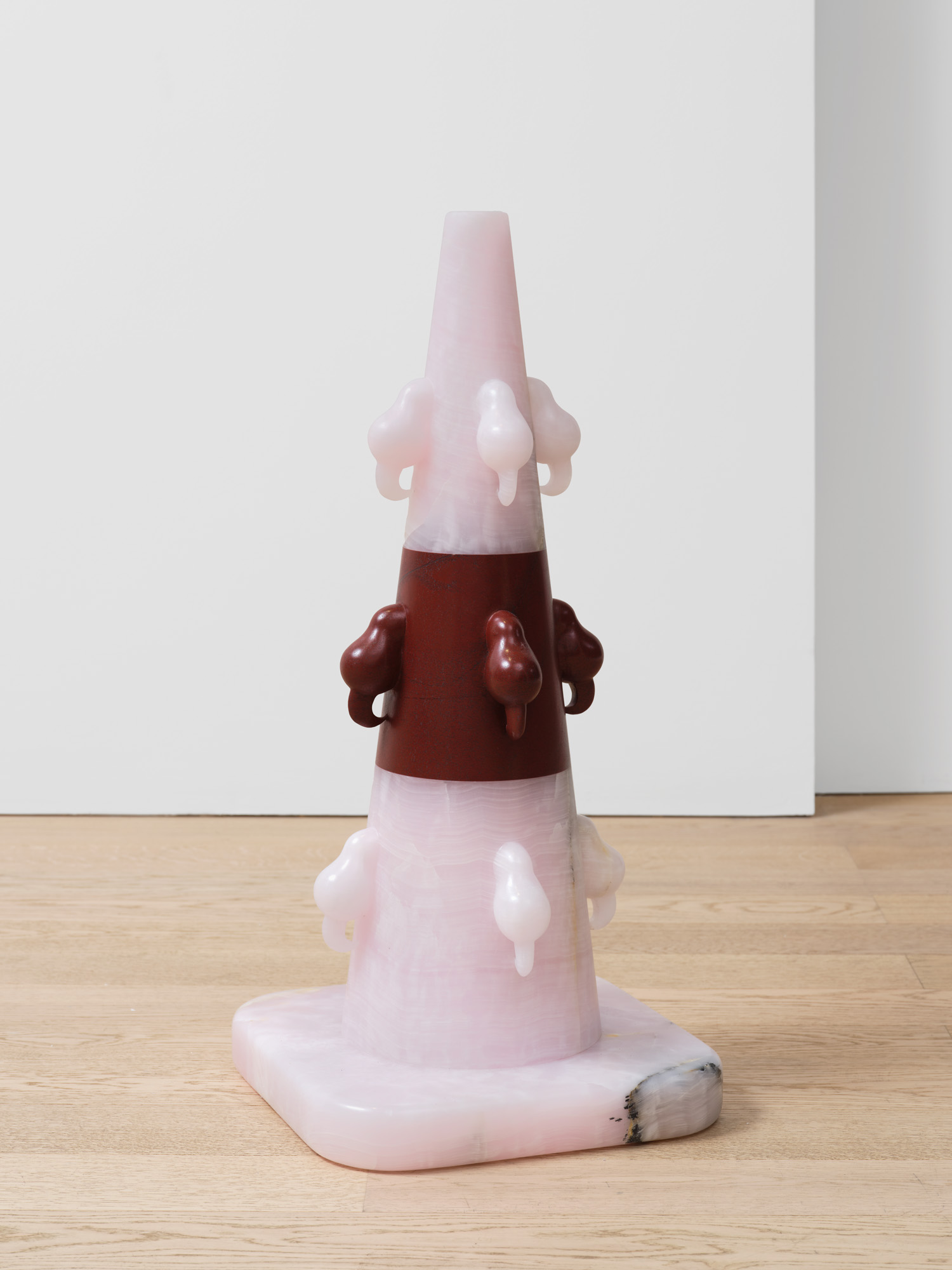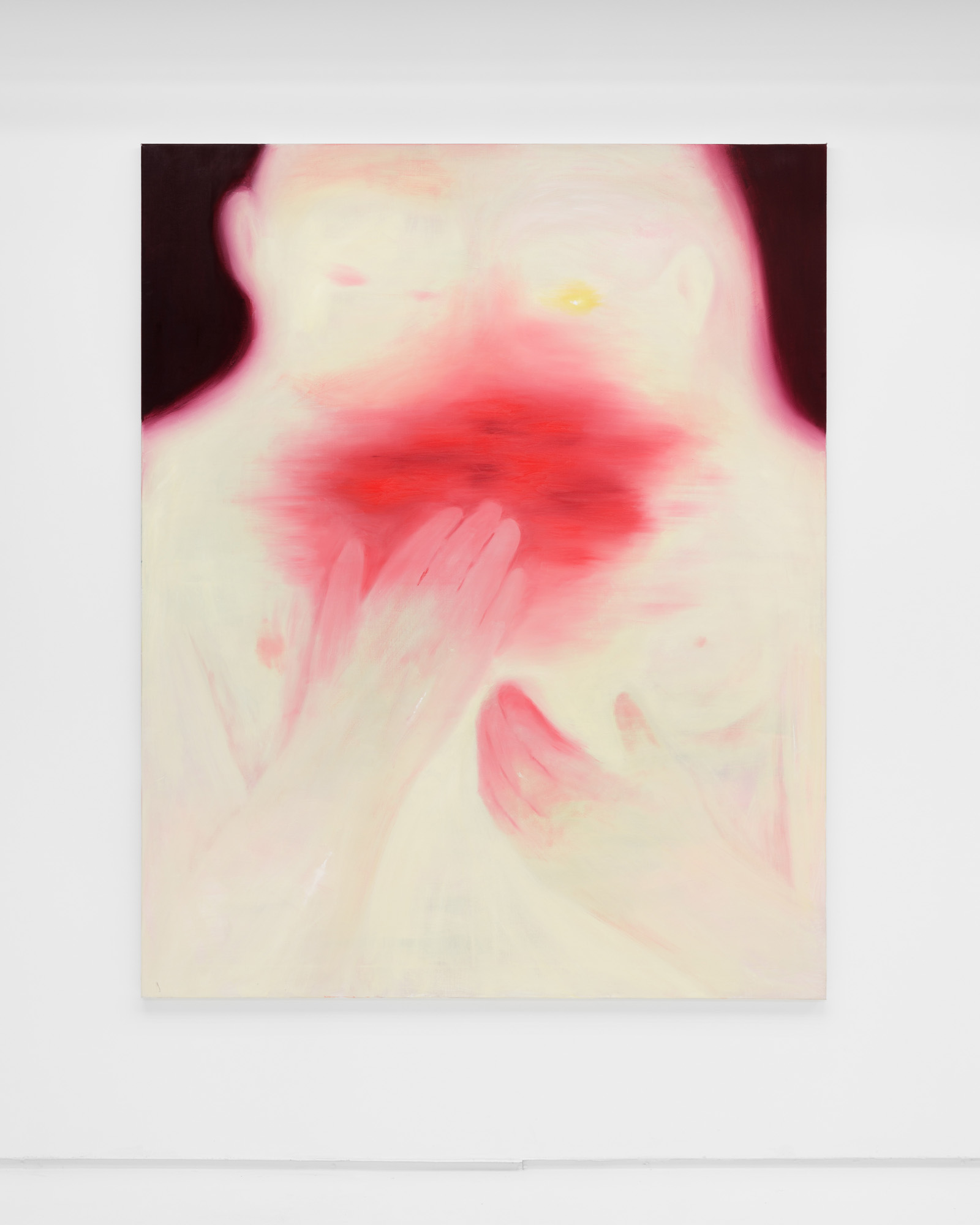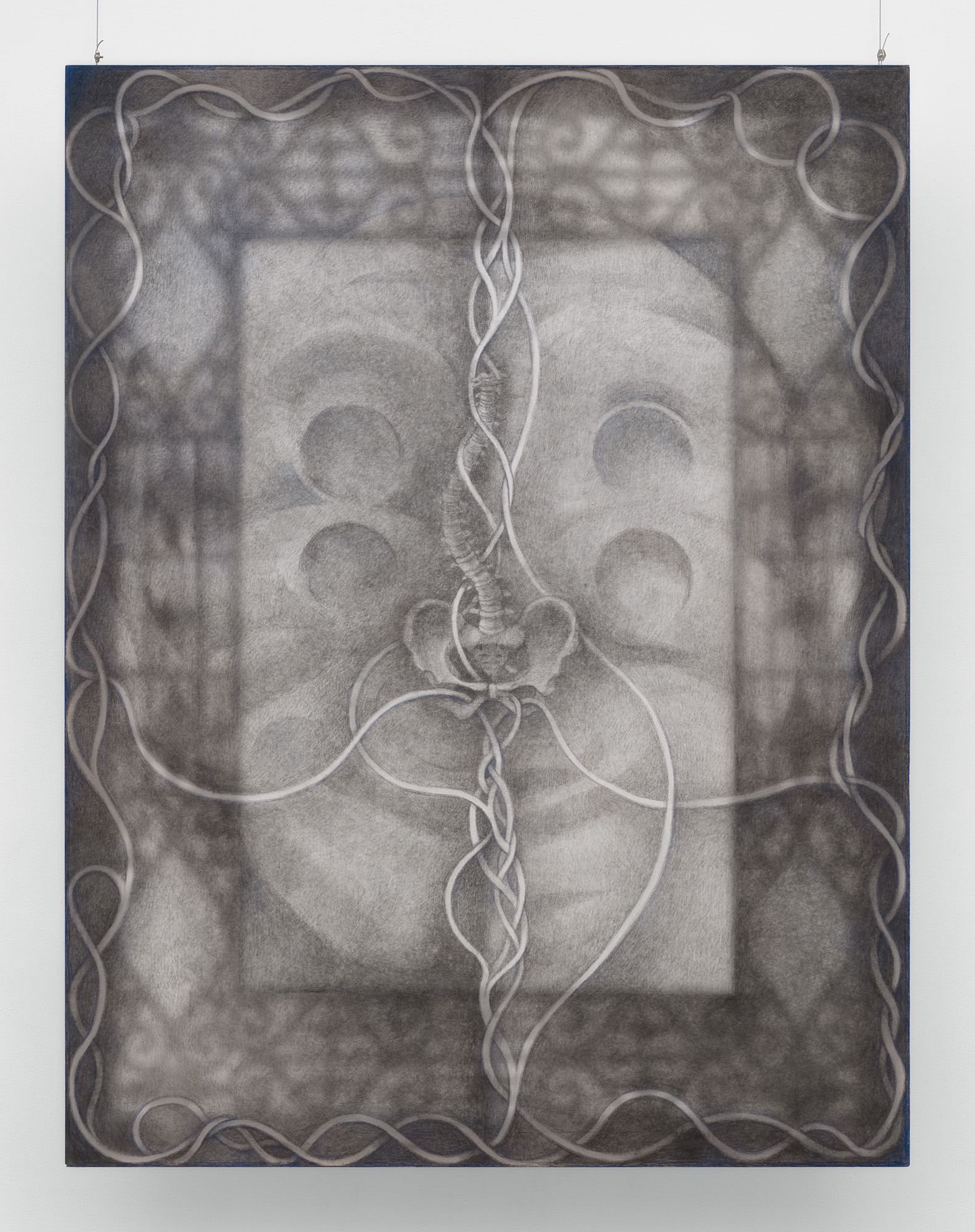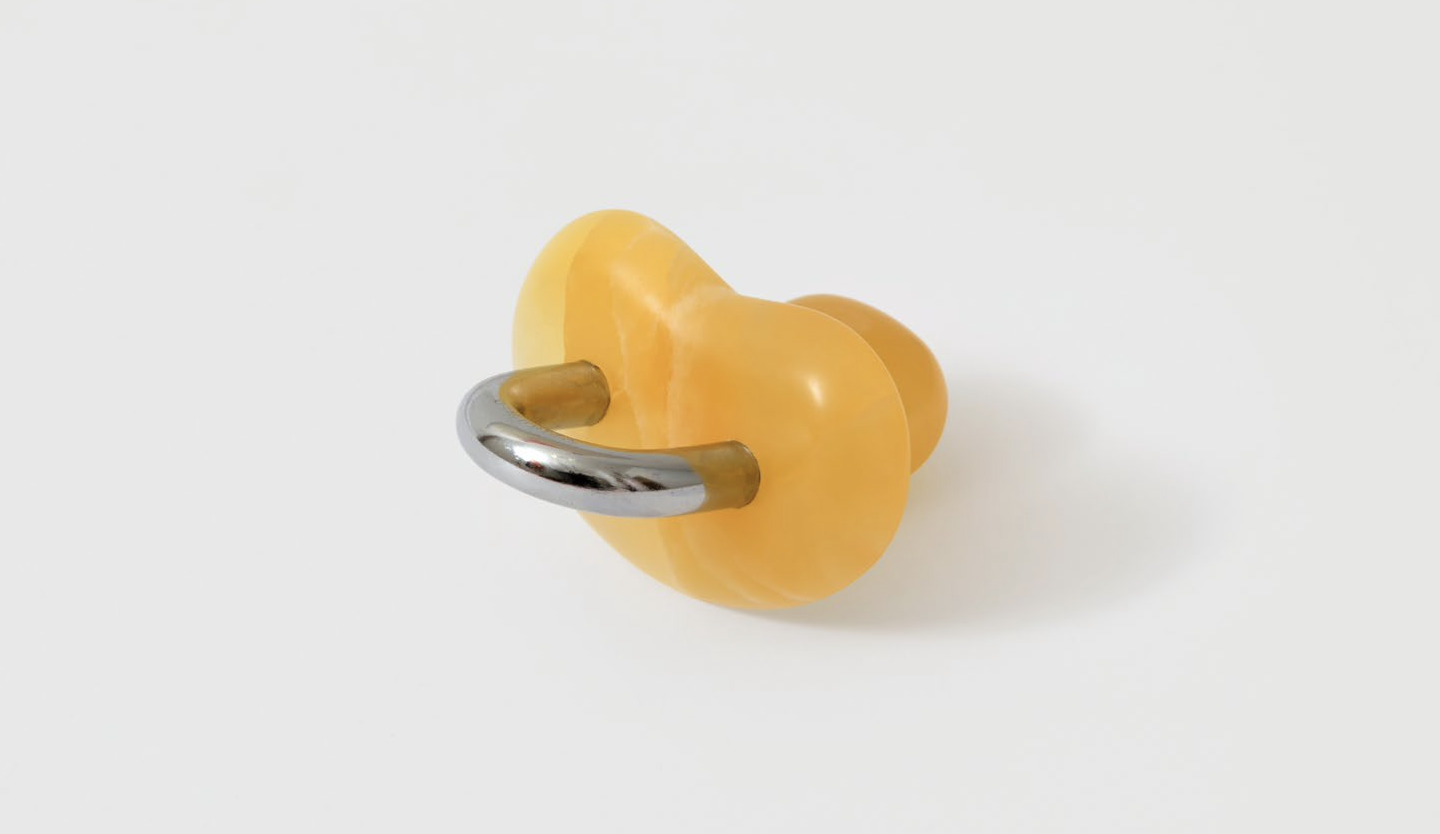The visceral, the grotesque, the unstable – what lies beneath the foundations of a respectable society? It is a question preoccupying seven New York-based artists, who are considering life’s raw undercurrents in group exhibition ‘Base Materialism’, on show at London’s Albion Jeune gallery until 30 August 2025. Named after the concept coined by 20th-century French philosopher Georges Bataille, the notion looked beyond traditional definitions of materialism to a more primal way of thinking.
For artists Ambera Wellmann, Cindy Ji Hye Kim, Fin Simonetti, Ivana Bašić, Rachel Rossin, Shuyi Cao and Shuo Hao, it’s a concept that can take shape in destabilised forms. Often alien or fragmented, their work embraces what society represses, in a faithful homage to Bataille’s rejection of a sanitary artifice, drawing from elements that are both repulsive and attractive.
‘I have attempted to capture the essence of the theme through strategic interventions in form and space, such as suspending work from the ceiling and anchoring to the floor,’ says Lucca Hue-Williams, founder and director of Albion Jeune. ‘This refers to a hierarchy of the corporeal; aligning the physically high location of the brain with the higher intellectual qualities of the mind, versus our base materials residing in the physically lower aspects of the body and considered to be intellectually “lower” organs.’ In the physical space of the gallery, the non-traditional placement of works is synonymous with Bataille’s non-traditional resistance of societal norms.

Untitled, 2025, by Fin Simonetti
(Image credit: Courtesy of artist)
The work of the seven artists supports this rejection of a conventional format. ‘Sculptures in the show consider the ways subjectivity can transform into otherness: from human to non-human; from organic to inorganic; from matter into pure idealism,’ says Bašić. ‘Pieces in the show resemble abstract and abject reductions of the body.’
Teased into otherworldly forms, Bašić’s sculptures of glass, wax, bronze, stone, stainless steel and oil paint are shaped by a clear narrative. ‘Glass speaks to the breath that formed it. Wax connotes the malleable, impermanent flesh – paraffin wax comes from petroleum, from the soil and fossils to which the body will ultimately go back into. Stone speaks to matter under pressure. Stainless steel to the inevitability and violence behind the forces of life and death, forces that act on the body. My pieces in the exhibition introduce transformation as a possibility of flight, but the kind of flight that occurs from within.’
In support of this, Bašić’s works don’t touch the ground. Suspended from rods, hanging from harnesses or resting on prosthetics, they ape a normal human body, but the details are off. They might be contorted past normal parameters, or spliced open to reveal an inner view we are normally spared, but they are always horribly, fascinatingly revealing.

Adonis et Ses Fleurs, 2023, by Shuo Hao
(Image credit: Courtesy of artist)
Materiality and its place in society is also contemplated by Simonetti, who puts materials in an architectural context for a wider consideration of architecture’s role in literally upholding social hierarchies.
Her works in the exhibition take on gothic tendencies, with the stone sculpture she is showcasing drawing from an eclectic range of influences, from cathedral spires to traffic cones. Both are used to signify authority in public space, albeit from across the spectrum, from the common to the cultured. Other pieces are taken from her series of bunny locks, some of which will be installed on a cast iron gate. ‘Broadly speaking, in my animal-based works I am interested in our relationships to animals as an entry point into thinking about human nature or social organisation, such as the subjugation of nature and construction of sentience hierarchies,’ she says.

Emperor’s Clothes (Blue Painting), 2023, by Cindy Ji Hye Kim
(Image credit: Courtesy of artist)
For Rossin, the variation in society is hidden in plain sight, in the infrastructure of the digital world. Her beautifully executed oil paintings hint at the otherness in the abstract, communicating in the digital language that she learnt to speak at five years old when she began computer programming. In her oil painting series The Totalists, Rossin uses traditional methodologies, such as texture and colour, to communicate the apparently paradoxical communion between the digital and the physical, the beautiful and the ugly. ‘I keep gesture in my work and lean toward texture because of how well it can make a record of a nervous system in time,’ she says. ‘The smears of vermillion are consciously kept in order to root you to a presence, the record I made while painting the work.’
‘My pieces in the exhibition introduce transformation as a possibility of flight, but the kind of flight that occurs from within’
Ivana Bašic
Taken as a whole, the works look beyond an idealistic notion of humanity, confronting a coarser reality. ‘Bataille’s exploration of base matter, a raw, unstructured force that disrupts social order, offers a radical perspective on the nature of reality and the human condition,’ says Hue-Williams. ‘This resonates with contemporary debates about social justice, identity and the potential for revolutionary change. Bataille offers insights into power dynamics, cultural norms, and the nature of consumption in modern society. His ideas resonate with concerns about the limitations of traditional frameworks for understanding the human condition. I am interested in recontextualising this philosophy within the sphere of contemporary thought, particularly through the work of these artists.’
‘Base Materialism’ is on show until 30 August 2025 at Albion Jeune, London W1, albionjeune.com
This article is in the August 2025 US Issue of Wallpaper*, available in print on newsstands from 10 July 2025, on the Wallpaper* app on Apple iOS, and to subscribers of Apple News +. Subscribe to Wallpaper* today

Pacifier 9, 2022, by Fin Simonetti
(Image credit: Courtesy of artist)

